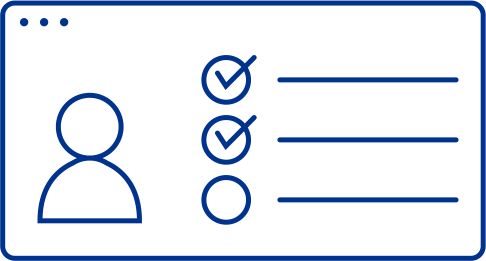In today's rapidly evolving business environment, supply chain and third-party risk management has gained unprecedented importance.
Evaluating your third-party exposure through concentration analysis, developing robust exit strategies for critical suppliers and conducting scenario analysis is essential to assess resilience of third parties and provide continued services to our clients and other stakeholders Beyond this, organizations are buckling under the pressures of regulators and clients demanding more when it comes to supply chain resilience. Many organizations are turning to alterative solutions to help them manage.
Three primary drivers contribute to the heightened relevance of third-party risk management (TPRM) include:
- Geopolitical landscape: In the current geopolitical landscape, Canadian organizations are grappling with challenges stemming from the tariffs and their second order impacts. These tariffs disrupt trade dynamics and supply chain channels, leading to far-reaching implications for businesses. According to the World Economic Forum (WEF), 79% of supply chain executives believe that geopolitical risks are a significant concern for their operations. This instability necessitates a robust TPRM strategy and assessing our sourcing channels to mitigate risks associated with third and fourth parties, review concentration risks, and assess dependency on critical suppliers that could impact business operations.
- Financial viability pressure on third parties: Financial pressures on third-party vendors have intensified, with many organizations facing cash flow challenges. A report from IBM indicates that 60% of companies have experienced financial distress among their suppliers, which can lead to disruptions in the supply chain. Organizations must conduct thorough financial due diligence and ongoing monitoring to ensure their vendors remain viable. In addition, organizations must rapidly and strategically evaluate the alternative sourcing options and map third party dependencies to critical operations. The World Economic Forum has also indicated that many chief economists expect the global economy to weaken in 2025 due to impending U.S. policy shifts and increased fragmentation, furthering the pressures third parties are expected to experience.
- Regulatory environment: The regulatory bar is increasing globally, requiring organizations to comply with various global and local regulations. The WEF highlights that 70% of companies are struggling to keep up with regulatory changes, which can lead to compliance risks if not managed properly. Proactive TPRM is essential for ensuring that third-parties adhere to these regulations and any regulatory or legal violations are addressed in a timely fashion to avoid regulatory and reputational implications.
Key actions in the current environment
To navigate these challenges effectively, organizations should review and accelerate their strategies to manage third parties:
- Conduct comprehensive risk assessments and map third party relationships to critical operations to identify vulnerabilities in the supply chain.
- Implement continuous monitoring of third-party relationships to ensure proactive risk management and financial viability of third parties.
- Develop robust exit strategies and conduct tabletop exercises (discussion-based sessions) to mitigate risks associated with temporary or long term supplier disruptions.
The value of third-party risk management as a service (“TPRMaaS”)
TPRMaaS refers to a suite of comprehensive, repeatable, ongoing solutions to address whatever needs organizations have in identifying, analyzing and managing their supply chain risks.
While not every organization may require TPRMaaS or the full suite of services, there are specific areas where it can provide significant value in areas of immediate concern for organizations today:
- Ongoing criticality assessments: Periodic reviews of critical suppliers, 4th parties and their relevance to critical operations. TPRMaaS supports this review to enable organizations to prioritize and better understand the relevance of the third parties to support critical operations.
- Dynamic risk assessments: Continuous monitoring of third-party and 4th party risk profiles is crucial. The industry faces challenges such as rapidly changing market conditions and evolving vendor risks. TPRMaaS can address these challenges by providing real-time insights and enabling organizations to make informed decisions.
- Due diligence assessments: TPRMaaS streamlines the due diligence process, ensuring that organizations have access to the latest financial, operational data and news on litigations, breaches on their third parties. This third-party environmental scanning enhances the quality of assessments and reduces resource expenditure.
- Contract compliance: With increasing regulatory scrutiny, TPRMaaS (legal and compliance managed services) helps organizations monitor contractual obligations continuously, identifying potential compliance issues before they escalate.
- Exit strategies: TPRMaaS facilitates the development of effective exit strategies by evaluating third party dependencies and allowing organizations to plan for contingencies. This includes identifying alternate vendors, assessing the time and cost to move to an alternate vendor and the possibility of transferring the service in-house.
- Third-party resilience and scenario analysis: TPRMaaS enables organizations to assess the resilience of their vendors and simulate various scenarios to understand potential impacts on the supply chain.
- Spend efficiencies: TPRMaaS helps organizations optimize their spending, identifying opportunities for saving and make strategic decisions that align with their business objectives by providing insights into spend patterns and competitive benchmarking,
TPRMaaS will leverage advanced technology solution to support your business needs. By combining the expertise of TPRM combined with artificial intelligence and advanced technology solutions; we offer the most holistic range of tech-enabled services in the marketplace for our clients' evolving needs in TPRM.
In conclusion, the imposition of tariffs compels businesses to reevaluate their supplier relationships, compliance strategies, and financial risk exposure. A robust TPRM strategy is essential for navigating this uncertain landscape. KPMG's TPRM as a Service (TPRMaaS) offers a comprehensive suite of solutions designed to help organizations identify, protect, monitor, and optimize their supply chain risk programs. By leveraging technology and regulatory expertise, KPMG can assist businesses in enhancing their operational resilience and maintaining a competitive edge.
Connect with us
Stay up to date with what matters to you
Gain access to personalized content based on your interests by signing up today
Connect with us
- Find office locations kpmg.findOfficeLocations
- kpmg.emailUs
- Social media @ KPMG kpmg.socialMedia

